<< BACK TO PROJECT LIST
Project: 302/2015
Title: Phalaenopsis rosenstromii, its systematics, distribution, conservation and propagation.
Applicant: Dr. Ashley Field
Institution: Australian Tropical Herbarium, James Cook University, Queensland.
Phalaenopsis rosenstromii F.M.Bailey is an epiphytic orchid that occurs in several very limited areas of tropical Queensland that is closely related to P. amabilis from Malesia.
Gus Rosenstrom discovered this species in Australia in the 1930’s near Daintree but following a frenzy of collection for its beautiful flowers discovered this species became locally very rare. The Australian Orchid Foundation research trips in the 1970’s discovered populations of P. rosenstromii over a broader range but it is still considered Engangered. Although it is now protected, it is still under threat from being illegally collected.
This project has four main aims:-
- to resolve the identity of the Australian Phalaenopsis population with respect to P. amabilis from Malesia;
- to map and model the extant populations and identify populations that need to be reserved;
- to re-assess the Endangered status of P. rosenstromii;
- to collect seed and micro-porpagate P. rosenstromii for an ex situ conservation reserve.”
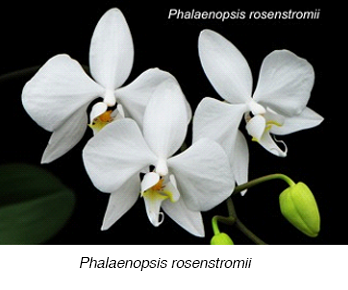
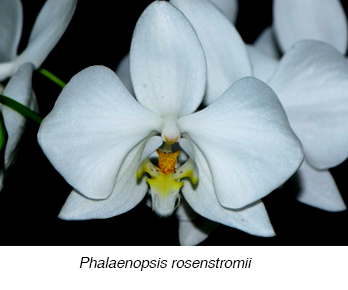
Research Outcomes
Phalaenopsis rosenstromii, its systematics, distribution, conservation and propagation
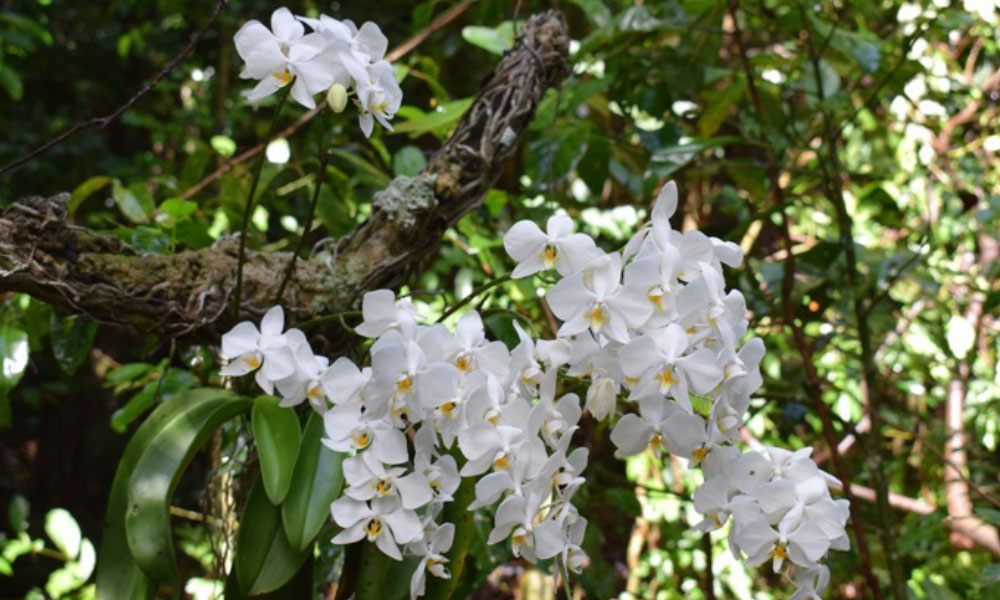
The Australian Orchid Foundation supported Dr Ashley Field to conduct a project on the systematics, distribution, conservation and propagation of the Endangered Australian tropical epiphytic orchid Phalaenopsis rosenstomii. Prior to this project, few herbarium records of this species had been made, and no co-ordinated attempt to establish an ex-situ conservation reserve had been conducted. This project was undertaken by Dr Field of the Australian Tropical Herbarium, and Mr David Baume of Redlynch, Cairns. Mr Baume is a volunteer at the ATH and an experience Phalaenopsis grower. The AOF project financially supported part of the field and nursery work, and all the micropropagation work. The project timeline was extended to enable wild collected salvage plants to establish, mature and flower in cultivation and produce seed for micropropagation. Micropropagation work was undertaken primarily in conjunction with Mr Brian Coleman of Coleman’s Orchids, Speewah. The project aided in the resolution of the identify of the Australian Phalaenopsis population with respect to P. amabilis from Malesia by sampling and supplying DNA material for phylogenetic analysis to a broader project on the species group being undertaken in Taiwan. The project mapped and modelled the extant populations, therein identifying that poaching was ongoing in some places and that the populations were very small and not setting seed frequently. It reassessed the conservation status of Phalaenopsis rosenstromii which is now listed as Endangered in both the Queensland Nature Conservation Act and Australian Environment Protection and Biodiversity Conservation Act. The main outcome of the project was the establishment of an ex-situ conservation reserve by salvaging and re-establishing fallen plants in culture, developing a method to overcome their self-incompatibility and thereby producing seed, and producing approximately 3300 seedlings in flask. Selfings, within-population and between population crosses were performed, and between population crosses produced the largest number and most vigorous plants, some of which were flowered within approximately 1 year of deflasking. Finally, 100 flasks of Phalaenopsis rosenstromii including approximately 2000 seedlings were freely distributed to partner native and species orchid societies around Australia so that more people and appreciate and conserve this enigmatic species.
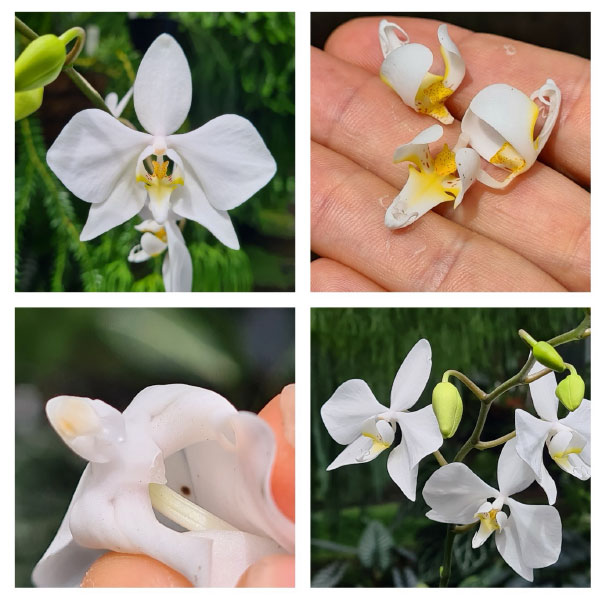
Flower features of Phalaenopsis rosenstromii showing flower form, labellum callus, side lobe, mid lobe shape and column shape. The mid-lobe is non-cruciform and is a diagnostic feature of in all Australian populations. These characters were non-plastic, being present in all field, cultivated and herbarium specimens examined.
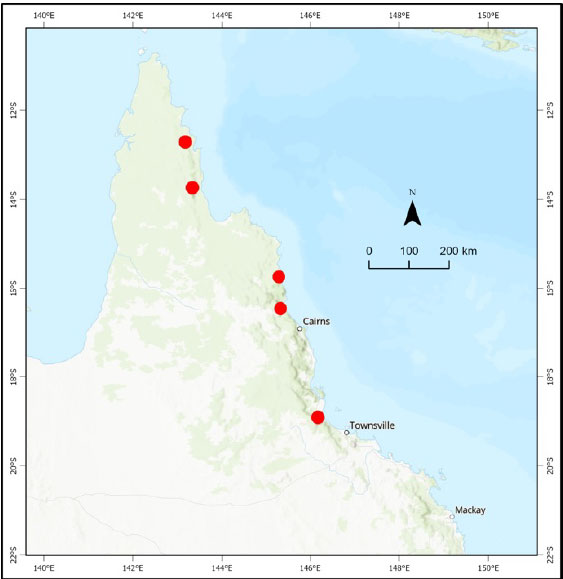
The distribution of Phalaenopsis rosenstromii is fragmented across five disjunct populations between Cape York and Townsville. One of these populations was recorded as new during our study.
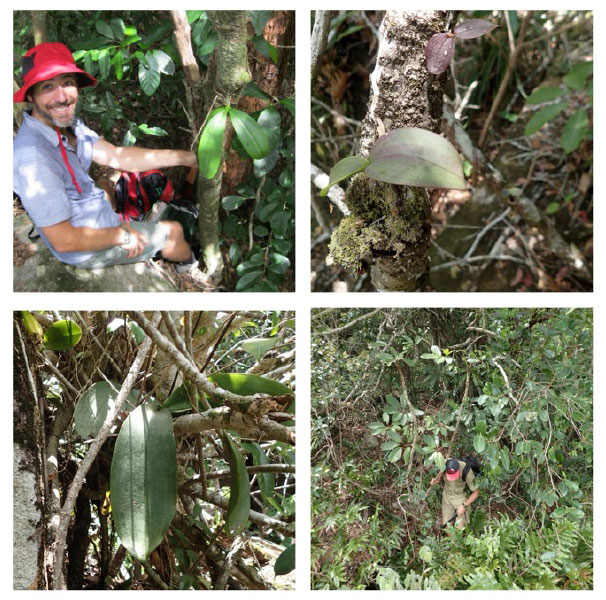
Phalaenopsis rosenstromii lives primarily on small trees and lianas in seasonally wet complex gallery rainforest, usually on a bouldery substrate. Seed set was rare in the 10-year period that plants were monitored. Despite low seed production, seedling recruitment was still effective if seed was produced.
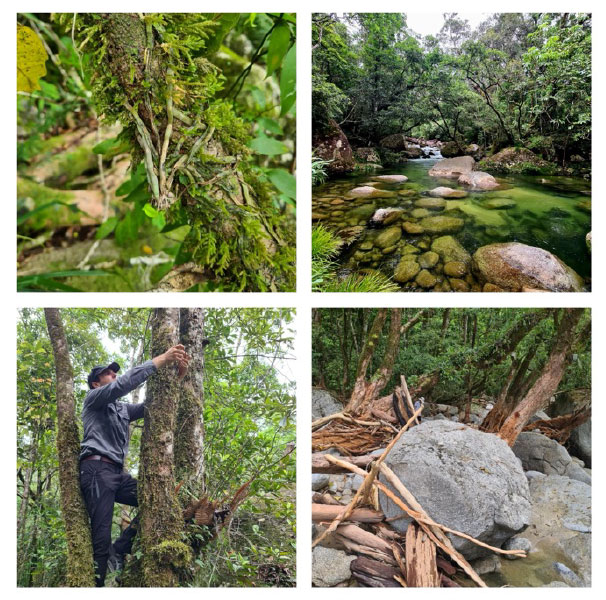
Attempts to reaffix fallen plants in the field were not particularly successful, possibly because fallen plants were already damaged and weak when found. Further work is needed to develop methods suitable for the reintroduction of mass-propagated seedlings.
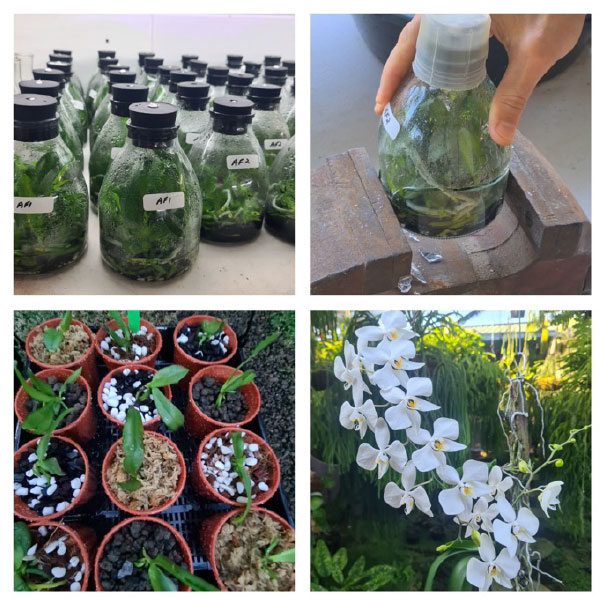
A method was developed to effect self-pollination in which an outcross was performed on the second flower of the spike, and once it had set a self-pollination was performed on the first flower of the spike. Once this pod had set the outcross was discarded. Sufficient seed was produced to flask approximately 3300 seedlings. Outcrosses and within population crosses so far appear to be the strongest in cultivation.
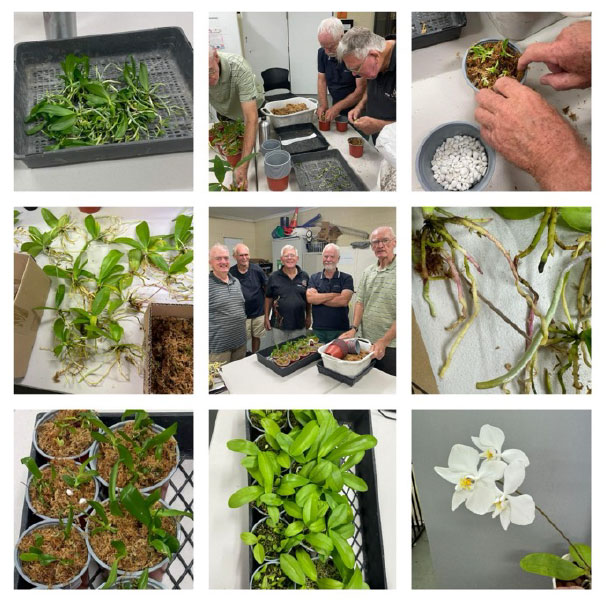
100 flasks (approximately 2000 seedlings) were distributed freely to Australian Native and Species Orchid Societies around Australia for members to deflask and grow as a club activity. A member of The Australian Native Orchid Society in Townsville was the first to flower a plant just shy of 12 months after it was deflasked. It is hoped that his introduction in cultivation will boost future continued breeding and reproduction of this species and stop poaching from the wild population.
Photos by: Peter Lucke
